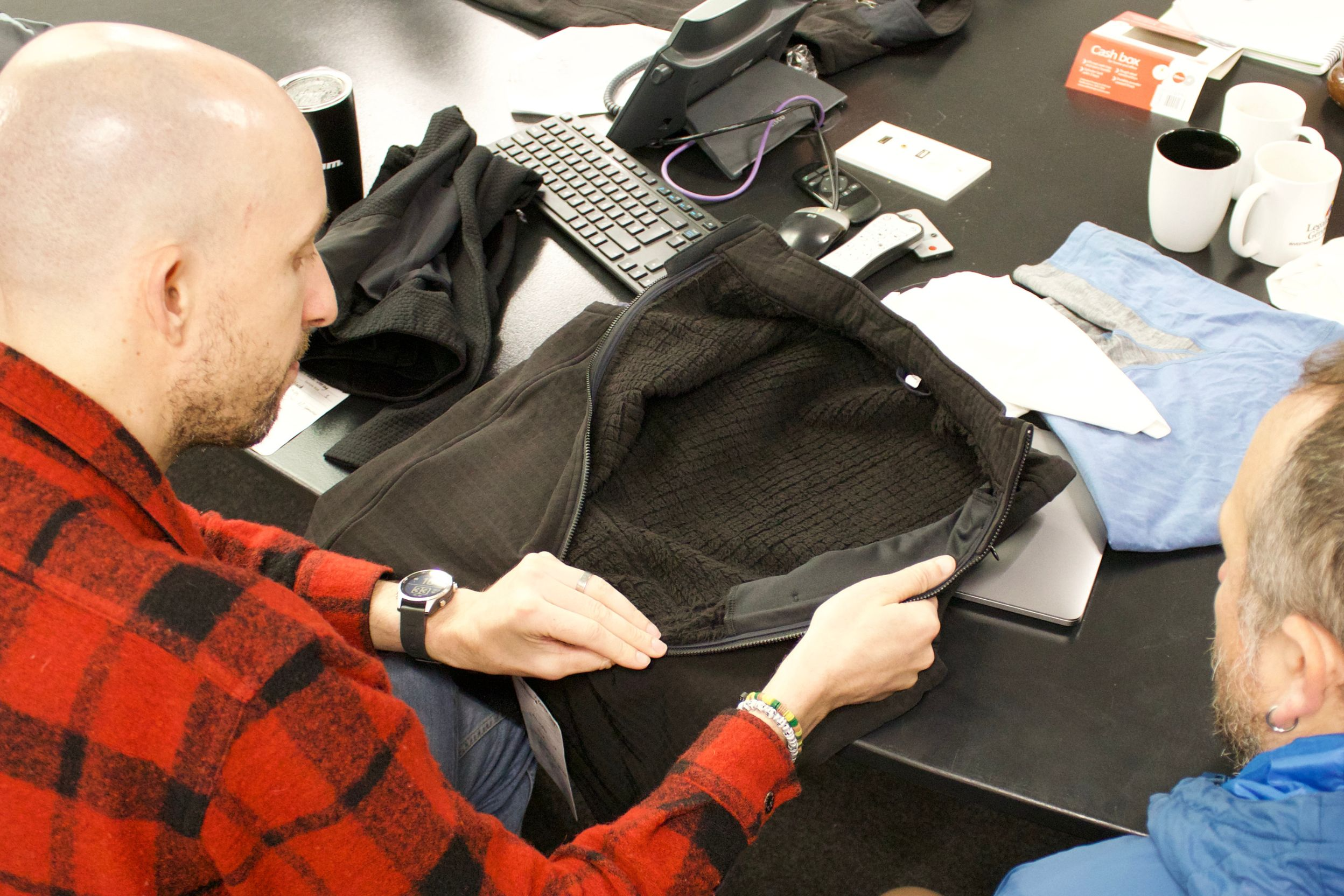An update on our gravel tee and grid fleece jersey
In the first post we took a look into the general production process of cycling clothing. If you haven’t already, we suggest giving that one a read, as it will help this post make more sense.
In this post we’ll be looking at our gravel tee (the Titan Technical Tee) and grid fleece long sleeve jersey (the Array Thermal Grid Jersey).

The Titan Tech Tee
At the time of writing, we’re on our third prototype of the Titan tech tee. This is meant to be our loose-fitting MTB Style jersey. But we’ve got a few runners in the team, and so we’re making sure it’s a good running tee as well.
The first fabric we tried simply wasn’t right. It didn’t feel nice to the touch and it didn’t feel good at all on the body. However, when looking at this tee, we thought about the mesh that made up the side panels on our other jersey (to give it some stretch) felt lovely in the hand and good against the body. So for our second prototype we tried the entire jersey in this fabric. In the office it felt great, and we sent some people out on test rides to try it in the real world. But we quickly learned that it ran way too hot – we suspect it must have been the amount of elastane in the material which stopped it being breathable. For the third (current) iteration, we’ve gone with a new, lighter fabric that simply feels more like a traditional tech tee.
One feature we’ve included that everyone seems to be a fan off is the built-in pocket. A lot of tech tees have got something like this: a small pocket for stashing some essentials like your car or house keys. However, most of these pockets are more like pouches, and anything you put in them tends to sag down, pulling the tee shirt and in reality stops you using the pocket in general. For ours, we created a bonded patch pocket, that is much more integrated into the tee. This makes it generally much more usable as a pocket.
As mentioned in a previous post, we’re trying to make our garments the same as high-street sizing, and we want consistency across the range. The first iterations of this tee were simply too big, so we’ve adjusted that as we’ve gone along. It’s easy to forget, but there is still someone sat at a sewing machine putting these garments together, and different fabrics respond to sewing differently, so the same measurements may fit and feel different depending on the fabric. Sizing tweaks are expected as we go along.
We’re currently testing this tee, but initial feedback is good, and we might be on to a winner with this version.

Array Thermal Grid Jersey
The intention behind this piece is a warmer (but not too warm – important for later) long sleeve jersey that can be worn most of the time. In general, we’d like all of our range to be worn across as much of the year as possible, and so we are designing with versatility in mind.
The first fabric we tried felt nice, but ultimately had too many issues for us to carry on with it. Unlike latest iterations which have got a grid fleece, the first one had horizontal stripey fleece. There are always deviations in manufacturing, but when using a material with horizontal stripes, these deviations are much more present – with one side not aligning with the other at all and showing in a very obvious way. Added to this, the material was far too stretchy to be practical – anything placed in the back pockets would pull the jersey down at the back.
The second version used a standard grid pattern, which looked far better. We also opted for one with less elastane than before, so it wasn’t as stretchy. With fleece materials you have the face (the outer) and the back (the inner, facing you). With this material we went with quite a hard face, and a mid-level brush pile on the back. We also opted for a wind-proof chest panel on it. It turned out that this iteration was way, way too hot.
We’re currently testing the third version. For this one we’ve done away with the wind proof chest panel, but opted for a harder face to the fleece to have some wind proofing effect and a higher brush pile on the inner (the higher the brush, the more air is trapped and the warmer the garment). The coldest our test rider has been out in it is -8 (remember that cold patch in early January…. Yeah….) and he was positively cosy. As mentioned earlier though – we want our garments to be as versatile as possible. So, while it was fantastic that Tom could get out when it was freezing, it would definitely be too warm when the seasons start to change.
To combat this, version 4 will have a slightly lighter fabric, of 175/200 gsm, rather than the 250gsm we’re using now, and not as much pile on the inner. Samples are currently being produced.
That’s it for these two pieces. Keep your eyes peeled for the next round of product updates, hopefully coming soon.












